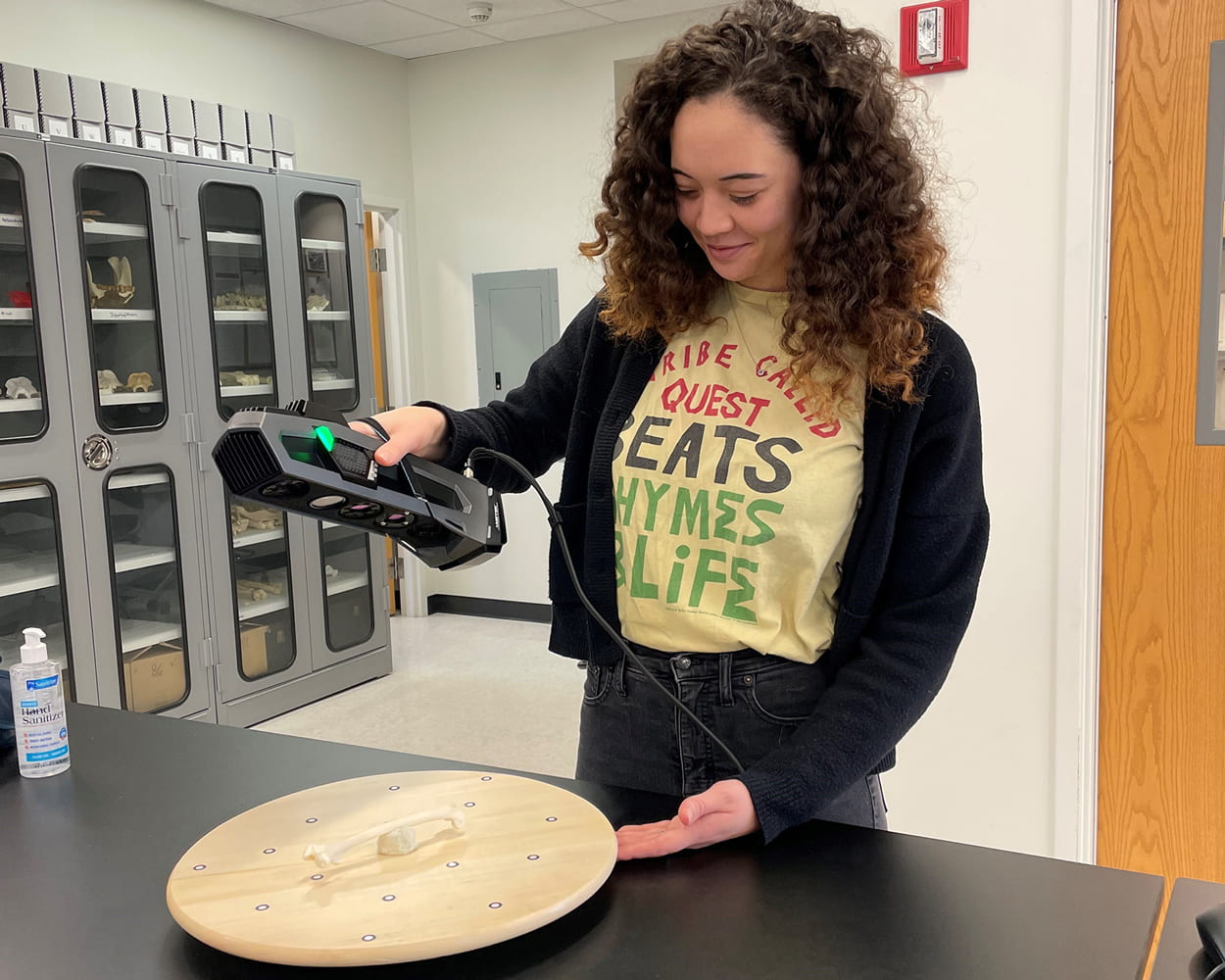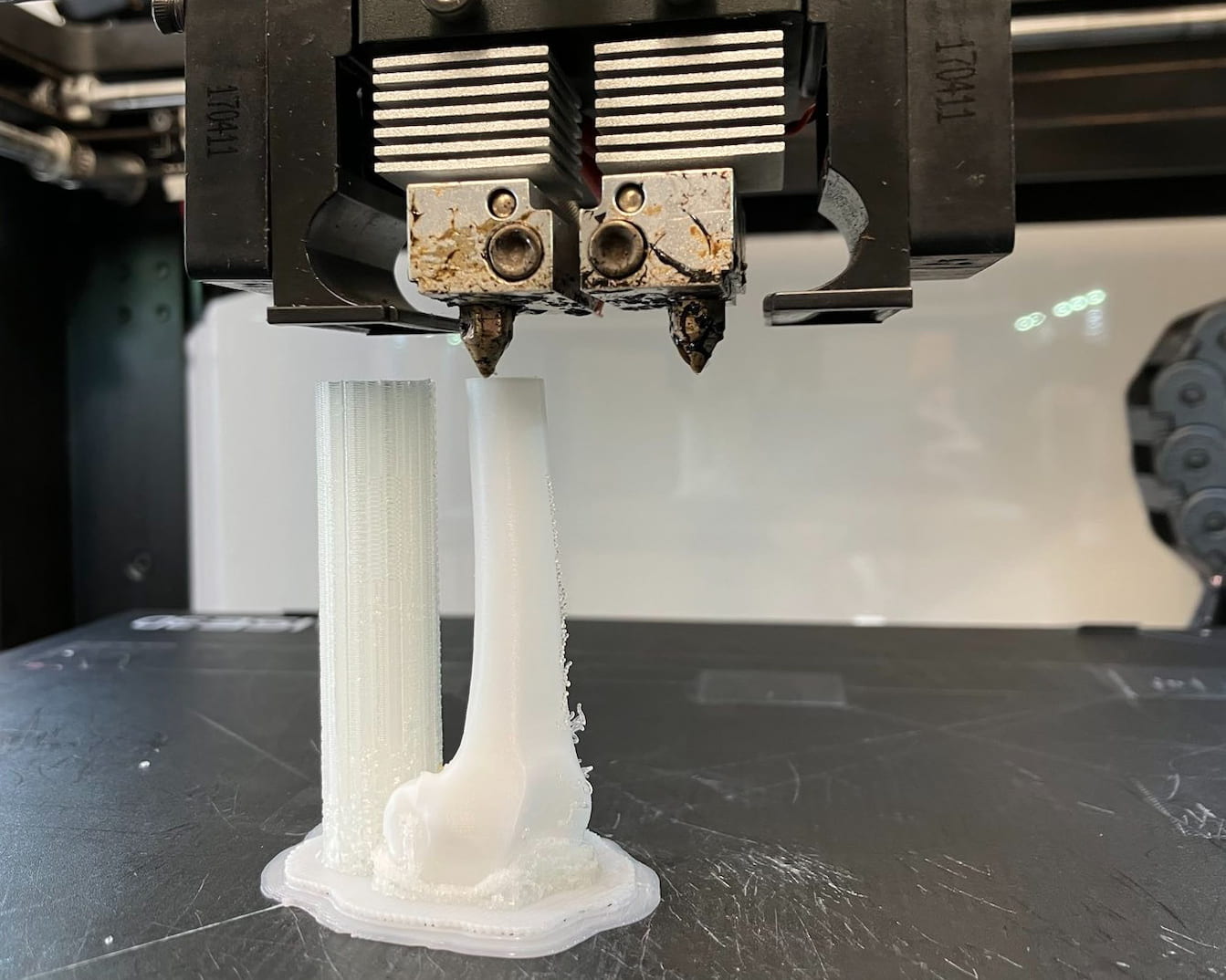Public outreach is part of our lab’s atmosphere, and this quarter our members have volunteered to run a workshop at Expanding Your Horizons (EYH), an effort to interest middle school girls in STEM fields now in its tenth year here in Chicago. To prepare for the upcoming March event, our team is pulling various resources together to make fossil discovery exciting, accessible, and informative. One of the steps taken to achieve this is to 3D print fossil replicas that the students will be able to “dig” for and handle in person.
To begin, we will be using our 3D hand scanner to create a digital copy of select items in our fossil collection. In the image below, grad student Maddie Kelly demonstrates this process using a femur (thigh bone). The object, supported by clay, is first placed on a rotating table marked with reflective dots; these dots tell the scanner where the object is within a three-dimensional space. Maddie will slowly rotate the table and move the hand scanner a little at a time to capture all the nooks and crannies of the object using the light cast by the scanner; this light bounces off the dots and bone surface back to the scanner to be measured and recorded as digital data. She will have to do this in a few separate views to capture the top, bottom, and all sides by flipping the object over and taking new scans.

Maddie Kelly uses the 3D hand scanner to capture data from a femur.
Once the item is fully scanned, the second part of the process is illustrated here by grad student Laura Hunter. All scanned views will need to be digitally stitched together and the clay erased to create one single clean three-dimensional digital object. While this file can then be used a number of ways for research, we will be exporting this particular one for use in a software designed for 3D printing.

Laura Hunter uses 3D software to stitch together 3D scans of a bone, creating a single three-dimensional digital replica.
Using our 3D printer software, we can now check that the file is watertight (a necessity for 3D printing) and upload it directly to our printer. We’ll use the common filament PLA with the help of dissolvable PVA supports. After printing, the item will be washed in water so that the only the smooth 3D printed PLA bone remains, ready to be hid at our “dig site” for the EYH students.

3D printing in progress of a femur using PLA and dissolvable PVA filament.
These replicas will be usable for future workshops as our lab members continue to think of new ways to engage the public and the next generation of scientists. Check back later for an update on our EYH workshop!
